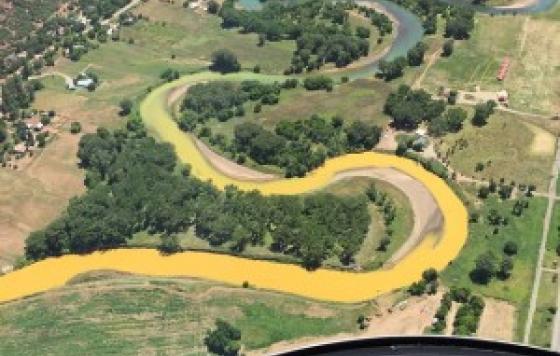By John Noël, National Oil and Gas Program Coordinator - follow John on Twitter
On the heels of a groundbreaking report on the oil and gas industry’s continued use of diesel fuel in its fracture fluid, comes another bombshell from two Stanford researchers in Wyoming. An LA Times exclusive indicates the researchers are completing a study in two geologic formations in the much heralded, Pavilion gas field. The results reveal that drillers were fracking IN formations containing underground sources of drinking water. IN being the key word.
Ever since the fracking saga broke into the mainstream, industry has continuously dismissed the public’s concern about the actual fracturing process on our sources of drinking water. They claimed that it is happening far below the surface with no chance of harming the pristine aquifers above. While lots of fracking does occur thousands of feet below the surface and under low permeability capstone rocks, this new research confirms that there are cases of fracking happening at incredible shallow depths of as little as 700-750ft. Which is far shallower than the “…four Empire State buildings stacked on top of each other (“approximately 6000 ft”) claimed by API – and wouldn’t even get you to the observation deck of the actual Empire State Building.
Beyond shallow drinking water operations, there is another revelation in the report which is critical to protecting drinking water. While presenting their work at the American Chemical Society conference in San Francisco, the researchers exposed that, “Thousands of gallons of diesel fuel and millions of gallons of fluids containing numerous inorganic and organic additives were injected directly into these two formations during hundreds of stimulation events.”
Ensuring that drillers using diesel comply with Safe Drinking Water Act (SDWA) requirements has been a major campaign effort for Clean Water Action. As explained here, diesel fuel included as part of the fracture fluid is potentially toxic and highly mobile if introduced to water resources. It is also one of the only areas in which fracking is regulated federally under the SDWA. However, we know from other investigations that no permits for diesel use have been issued. Therefore any use of diesel fuel in fracking not only presents elevated threats to USDWs as its injected under high pressures, it’s also potentially in violation of federal law if a permit is not obtained.
This research further illuminates the impacts of the regulatory exemptions the oil and gas industry enjoys. If Congress had not exempted fracking from the SDWA in 2005, this type of precarious drilling in underground sources of drinking water would ideally have received much greater scrutiny under the SDWA Underground Injection Control Program. Thanks to this pioneering research in Pavilion, the fracking industry’s porously regulated activities can only continue for so long without instances like this coming to light.
Concerned readers can take action here and call on EPA to take several steps to bring fracking operations using diesel into compliance with the law.
Related Posts
Stay Informed
Get the latest updates and actions:
Thanks for signing up!
There was a problem processing your signup. Please try again.


